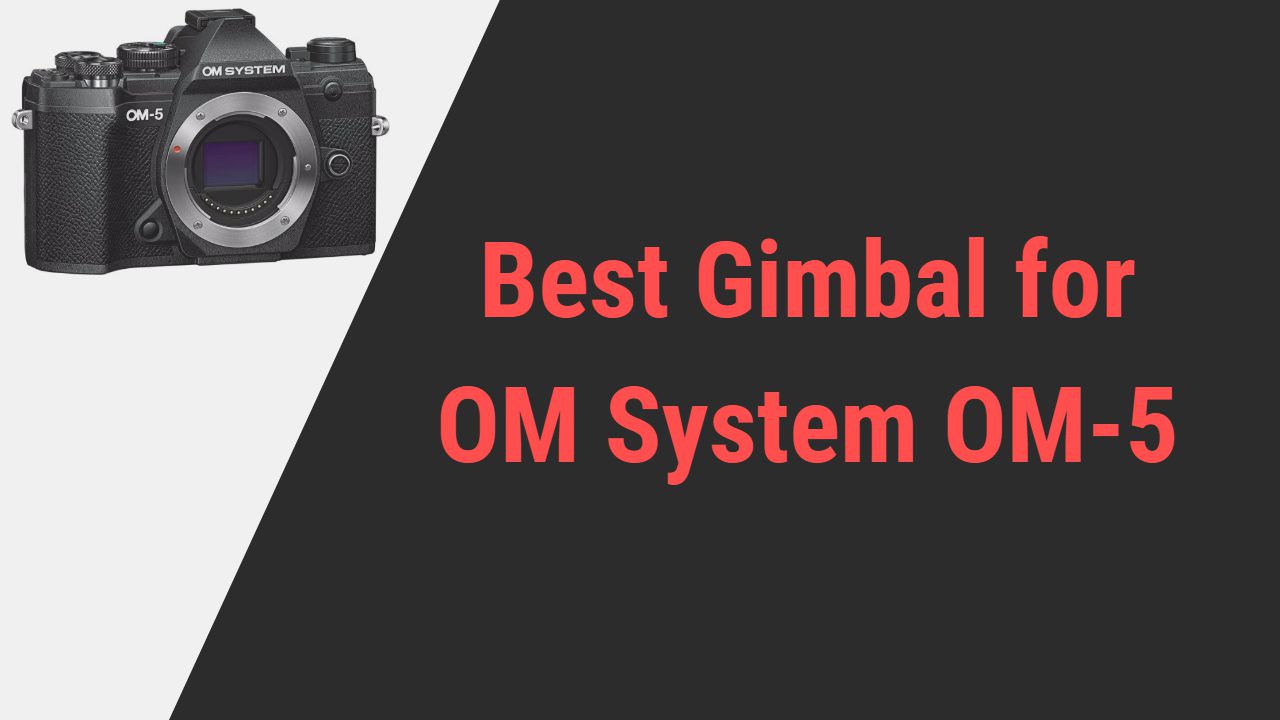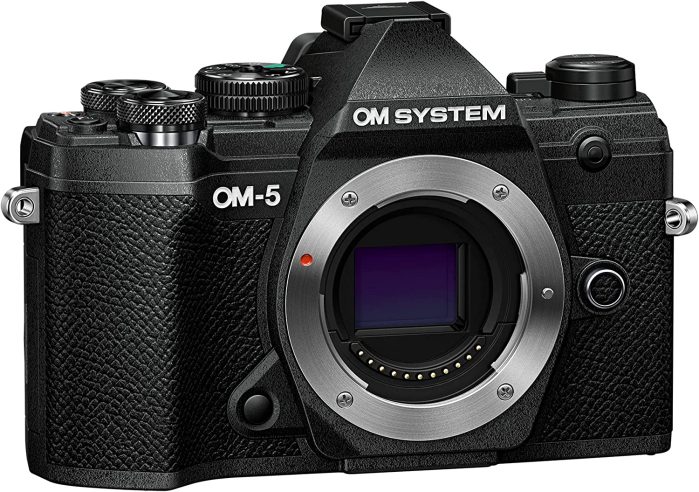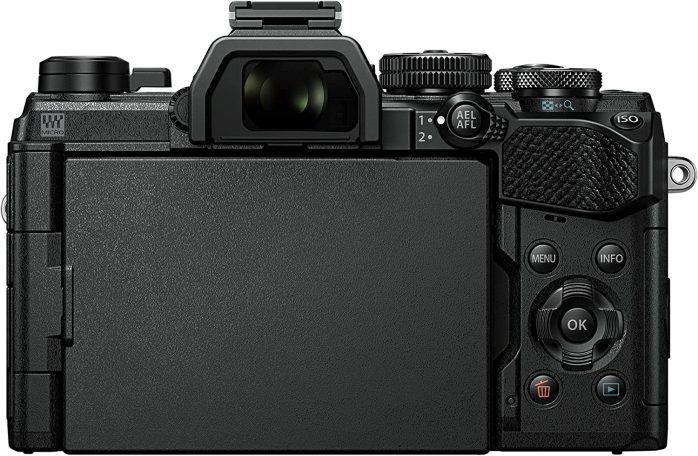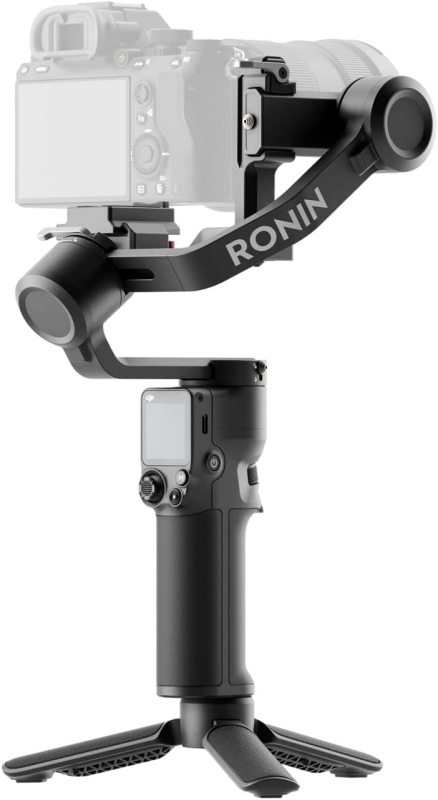The OM system OM-5 is a great option for photographers and videographers who want a compact, versatile, and powerful camera.
But when it comes to capturing smooth and stable footage, gimbals are a game-changer for videographers and content creators. If you have OM-5, the next very best step will be to choose one adequate gimbal for your system.
A good gimbal can elevate your videography skills by providing you with steady shots, but finding the right one can be a daunting task, with the market full of gimbal options.
Cutting to the short, I did a great job in making things easy for you; in this article, I am going to review some of the best gimbals for OM system OM-5 so that you can continue capturing stunning images regardless of the dynamic scenario.
OM System OM-5
There is no official support from gimbal manufacturers for the OM system OM-5. Some features like capturing photos, focus, and start/stop recording may not work using the gimbal or wireless app so you have to manually adjust all these things from the camera when shooting.
Other than that, all the mentioned gimbals here work perfectly fine and I have personally tested them all with the OM system OM-5 camera.
| DJI RS 3 (Best Overall)

|
| DJI RS 3 Pro (Most High-end - Highest Payload Capacity & Comes with Advanced Features)
    |
| DJI RS 3 Mini (Budget Pick)
    |
So scroll down and pick your option and take your OM-5 photography to the utmost level.
Best Gimbals for OM system OM-5
1. DJI RS 3 3-Axis Gimbal for DSLR and Mirrorless Camera
In the whole stabilized photography world, there are only a few to trust; this is the reason I am going with my once and always first choice DJI here.
DJI’s expertise magnificently in the world of digital filmmaking, the result like DJI RS 3 Professional gimbal, is an active example of it.
Why DJI RS 3 for OM-5?
I recently got my hand on this best-seller DJI RS 3 and was impressed with its smooth collaboration with my OM-5. The gimbal got fascinating build quality, fruitful features, and performance on top, all in order to stabilize the trickiest shot.
Technically RS 3 isn’t compatible with OM-5, which is why you gotta manage some settings and seize the parameters manually, but it does best in summoning balance for OM-5 shots; Let’s have a deep look.
Payload– The RS 3 has a payload capacity of up to 6.6 pounds, which means it can support a wide range of camera setups. Meanwhile, The 12.9 oz weight OM-5 camera can be handled with ease.
Mounting– RS 3 uses dual-layered quick-release plates to allow quick calibration of the Camera like OM-5 without any unnecessary need for rebalancing and stuff. There are automated axis locks to secure the mounting while expanding the axis horizons.
Intelligent Shooting Modes– The gimbal’s motors are incredibly powerful, providing smooth and stable footage even when filming in challenging conditions. It uses the upgraded third-generation RS stabilization algorithm that assures 20% additional stability. RS 3 lets the 21-megapixel OM-5 shoot multiple follow modes, different angle and motion function modes such as Dolly Zoom, Motion lapse, Track, and panorama.
Battery Life– Designed with a powerful Lithium-ion polymer battery, RS 3, with 3000 mAh power, this super versatile gimbal can work up to 12 hours on a single charge. On the contrary, it also supports fast charging with the courtesy of 18W PD charging, which requires only 2.5 hours to refill the battery.
Build Quality– The RS 3 build quality is exceptional; it is made using high-quality material throughout. RS 3 Design is all-way sleek, and the 2.4 pounds of weight distribution is well balanced and decent enough to be comfortable to hold for an extended period. It also has a wide 1.8-inch OLED panel that grants an 80% larger display and intuitive control options.
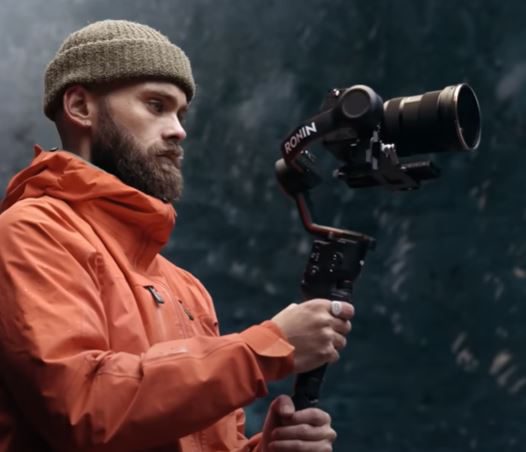

Controls– DJI RS series is famed around the market for its effortless series of controls and handling. It has two modes of control: physical and remote. The gimbal can be controlled via the DJI Ronin app, which allows for a wide range of customization options. At the same time, it can be associated with camera positioning, shooting mode switch, and other camera settings through the engraved dial on the body.
Final words– I highly recommend the RS 3 for any professional filmmaker who wants a reliable, versatile, and high-performer stabilizer with advanced technology and all on a reasonable budget
Pros
- Easy mounting
- Effective Axis locks
- Live transmitting
- Super Smooth mode
- Hassle-free controls
- Compact and light
- Intelligent shooting functions
Cons
- Lack durability
2. DJI RS 3 Pro Handheld 3-Axis Gimbal Stabilizer for OM-5 Camera
Moving on to the next and most powerful among all gimbals; A splendid icon of performance, potential and, convenience, creativity. DJI RS 3 Pro is an upgraded charm of the DJI designed to handle the trickiest shot on the field with its exceeded versatility. The power weapon for top-notch stability
Why DJI RS 3 Pro for OM-5?
As a keen photographer, I always strive to frame the best quality footage possible, and RS 3 pro is a key I found. An advancement of RS 3, a wondrous tool with exception algorithm, and never-seen versatility; all that proves to give OM-5 a roller-coaster filming experience of good, great, and best. However, the gimbal might need some extra attention with all settings because on the official record, RS 3 Pro might not be a compatible gimbal for an OM-5 camera. Still, it’s worth creating photography magic; let’s see how
Stabilization– The primary obligation gets carried out by the upgraded third-generation RS stabilization algorithm that ensures incredibly smooth and fluid stability even with high-motion shots. The gimbal is trained to create the magic of balance using the special super smooth mode even when I am walking or running, which is an advanced level of deal. One thing also to notice is RS 3 Pro’s stabilization is not anything like an ordinary gimbal; it has a more extensive scenario due to the DJI RS SDK protocol.
Design– The DJI RS 3 Pro is built like a tank. It’s sturdy and well-constructed, which is exactly what you want in a gimbal. The composite of carbon Fiber is put together to increase stiffness while lowering the weight to 3 pounds only. Additionally, RS 3 pro has extensive ports, including RSA/NATO ports that allow third-party accessories to tag along (Accessories like twist grip handle, tethered control handle, and others)
Display– The design gets complemented with one large 1.8-inch OLED panel with a redesigned user interface and precise control. This comes in handy in engaging setting parameters, shooting status, and framing tracked subjects. The RS 3 Pro has the competency to give adequately precise footage of your camera directly to any smartphone device using a Ronin RavenEye image transmitter. Also, the high-bright remote monitor can be used.
Ease of use- One of the things I love about the DJI RS 3 Pro is how easy it is to use. The setup process was straightforward and intuitive, and I was up and running in no time, happening with the helping hand of Dual layered quick-release plates and axis locks. Both physical and online controls are responsive and easy to understand, and I had no trouble adjusting settings on the fly as I was shooting. The DJI Ronin official application expands the user’s creativity options while the physically engraved dials assure ease.
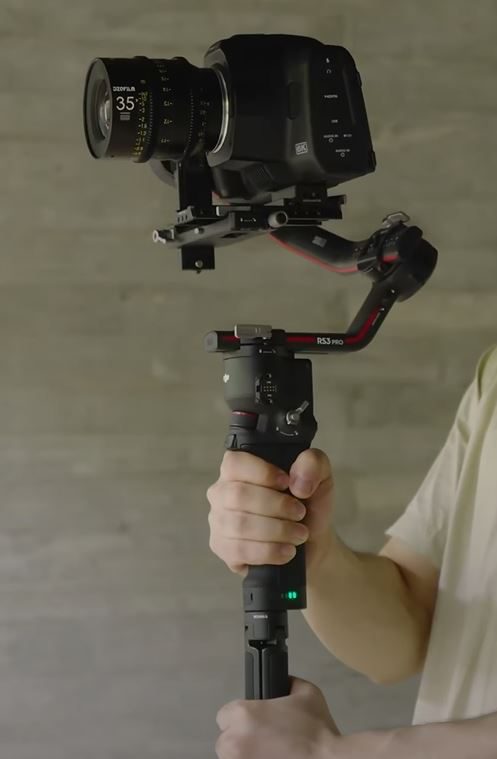

Power source– The battery life on the DJI RS 3 Pro is impressive. I was able to use it for several hours, precisely up to 12 hours straight, on a single charge. And I love the fact that the DJI Lithium-ion polymer battery empowered with 1950 mAh is detachable and fastest charging supported, so it takes 1.6 hours to juice up the drained battery.
Jaw-dropping features– Other than the basics, RS 3 Pro has some fascinating features like the incredible focusing technology using LiDAR. Things get easiest when Ronin 4D’s LiDAR focusing technology is implemented to let LiDAR range finder project 43200 ranging points in a certain area to film a subject. Also, did you know RS 3 Pro can carry up to 10 pounds of weight which kind of make it the best gimbal for large cameras. Then there is an upgraded Active Track Pro that allows you to track your subject automatically, making it easier to capture smooth footage even when you’re moving around.
Final words– In all words, DJI RS 3 Pro is a game-changer for OM-5 cameras; from its design to its performance, every feature is top-notch and is an excellent investment.
Pros
- Strongest build
- Upgraded Active Track 4.0
- LiDAR Focusing technique
- Extensive Coverage
- Additional accessories port
- Quickest charging
- Super Smooth stabilization
- Live Transmitting
Cons
- Pricey, but worth it for the quality
3. DJI RS 3 Mini 3-Axis Lightweight Gimbal Stabilizer
OM-5 camera is a great asset for any adventurous person, which is why it requires a companion with thrilling efficiency and potential, satisfied by none other than DJI RS 3 Mini. A lifesaver for your wallet and effort, this is one beautifully compact and user-friendly gimbal for your camera.
Why DJI RS 3 Mini for OM-5?
I prefer the RS 3 mini, as in a wise gimbal option for my OM-5 camera, because I am thoroughly impressed with how wonderfully it blends with my camera function even when it’s not compatible with the official record. Its compact, designed body comprises all the essential professionalism required to shoot stability.
Also the versatility, on the other hand, comes as a powerful tool to help conquer the photography of OM-5. There might be some physical work to do on settings due to compatibility, but once it gets all set, the RS 3 Mini takes you to the adventurous field.
Performance- The main function of any gimbal is to stabilize your camera, and the DJI RS 3 Mini does an amazing job at this. With the standard support of the third-generation stabilization algorithm, it cooks up smooth and stable shots even with spontaneous motion. The gimbal also has a max payload of 4.4 pounds, which means you can use it with a variety of different cameras and lenses.
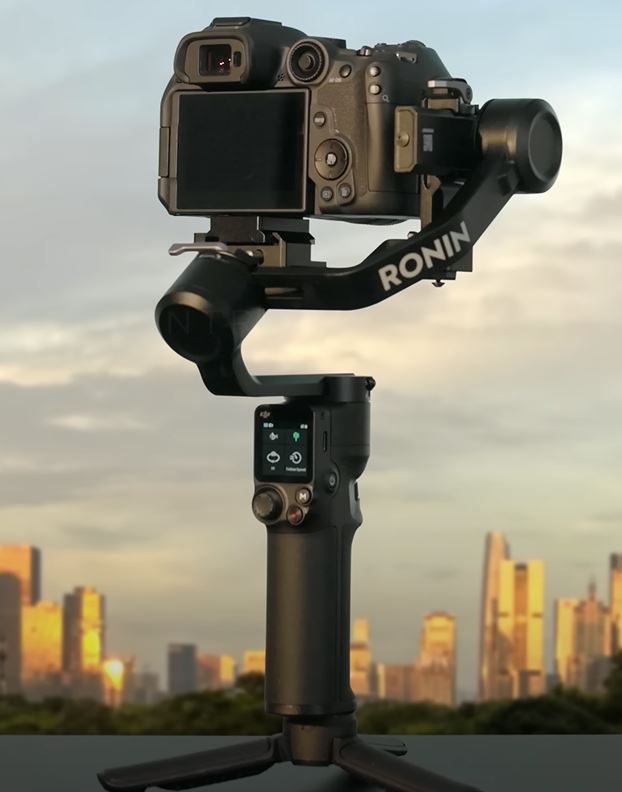

Intuitive controls- The DJI RS 3 Mini is very easy to use, even if you’ve never used a gimbal before, so that way, it is a beginner-friendly gimbal. The controls are intuitive and straightforward, with a simple joystick and a few buttons for adjusting settings. There’s also a DJI Ronin official application that you can use to control the gimbal remotely, which is a nice touch. Let’s not forget the intuitive 1.4-inch OLED panel that can be used to calibrate the setting parameters, but with OM-5, you got different interfaces.
Versatile modes on– Above all things, RS 3 Mini’s versatility has amused me in an out-of-ordinary way, and by versatility, I majorly mean its range of shooting mode. There’s a standard mode for basic stabilization, a sport mode for faster movements, and even a time-lapse mode for capturing beautiful time-lapse footage. Also, adding the cherry of creativity, there is a selfie and portrait mode and easy horizontal to vertical shooting for social media, overall, a gem for daily filming.
Long living battery– And finally, the battery; I must mention it did more than expected. Despite its smaller size, the RS 3 Mini gives 10 hours straight working through the courtesy of a DJI lithium-ion polymer 2450 mAh battery. The gimbal also charges quickly, which is precise to 2.5 hours, with included USB-Type C cable so you can get back to shooting in no time.
Engineering– The first thing that caught my eye about the DJI RS 3 Mini was its compact size. It’s incredibly portable and easy to carry around with you wherever you go. But at the same time, the gimbal checks all the durability factors. The grip is comfortable to hold, and the buttons and controls are all easy to access. With the least weight of 1.9 pounds, the RS 3 Mini is incredibly powerful to support the wide-range camera.
Calibration – Setting up the gimbal is a breeze thanks to the intuitive design and clear instructions. The multi-hand quick-release mechanism comes super useful in the whole calibration thing. Once it’s set up, I can easily switch between modes, interrupt with other settings, position my camera, and frame creative horizons without any hassle.
Final words– Summing up, it’s an excellent tool for smooth and stable filming, one that is packed with tons of great features in a compact body to make it a joy to use, sticking to the minimal price tag too.
Pros
- Multiple controls
- Versatile shooting modes
- Detachable tripod
- Strongest battery build
- Compact designing
- Additional accessories mount
- Least weighted as a feather
- Exceptionally affordable
Cons
- Compatibility trouble
Why Trust DJI gimbals above all the other brands?
The market is flooded with tons of advanced and high-performer gimbals from different brands, all claiming to be the best and most productive.
So why DJI? If you ask me, DJI has its own reputation of serving best above all; they work on Quality above Quantity theory, making a stand in the market.
DJI is a company that has been at the forefront of innovation in the drone and camera industries for years, and they have brought that same level of expertise and innovation to their line of gimbals.
DJI is a well-known brand in the photography and videography industry and for a good reason.
- They are known for their exceptional stabilization potential and advanced technology system that can effectively counteract unwanted movements and vibrations, resulting in smooth and stable footage.
- DJI gimbals are versatile and user-friendly. They come with various features that make them adaptable to different shooting scenarios. And they offer tons of shooting modes anchoring time or motion interruption.
- DJI gimbals are durable and reliable. They are made of high-quality materials and are built to withstand harsh conditions. Whether you’re shooting in extreme temperatures or rough terrains, DJI gimbals can handle it.
- Also, DJI gimbals are designed with the user in mind, with intuitive controls and easy-to-use interfaces; this way, people don’t have to spend hours learning control. Also, it qualifies for equal accessibility to both professionals and amateurs alike.
- DJI makes their gimbals exceptionally versatile, which is why they can be used with a wide range of cameras, including high-graded DSLRs, mirrorless cameras, and smartphones of different sizes and shapes.
- And also, they are wonderfully sweet when it comes to serving their customers. They provide excellent customer support and after-sales service. They offer comprehensive tutorials and user manuals in order to keep things effortlessly easy.
So, yeah, DJI gimbals stand out to be perfect in the market because they are the combination of advanced technique, never-seen build quality, versatility, and user-friendly factor.
The above-mentioned DJI RS 3 Pro, for instance, the 10 pounds payload, such a strong body, and some fascinating features like LiDAR focusing Active Track 4.0 and Ronin live transmitting with reliable service. I mean, what’s not to like?
Know your Camera – OM system OM-5
A master key to the discovery of the world of flawless photography, the very own OM system OM-5 camera with all the capturing essentials.
The OM System OM-5 is a 35mm film camera that was introduced in 1997 as the last camera in the Olympus OM series; it stands out to be a classic example of creative filming and convenience because of its high-quality resolution and compact size.
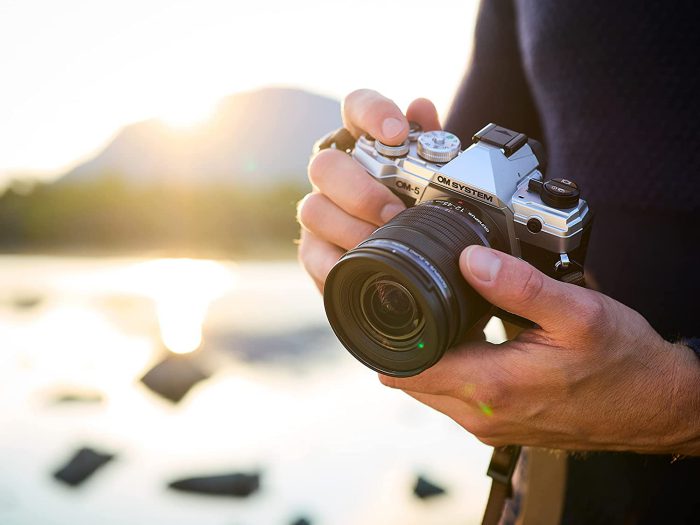

The OM System OM-5 is a reliable and versatile camera that every photographer should know.
There is a wide reason why it came as best; considerably because of Its compact size, advanced technology, interchangeable lenses, and automatic film loading system, all making it a great choice for photographers of all skill levels.
Not just it, being a classic camera, OM-5 sticks with the most reasonable price tag of $1199 only.
So whether you are an entry-level photographer or a professional, this wonderfully amusing mirrorless camera is something you can’t afford to miss if you are looking for a filming adventure.
The primary characteristic of the camera OM System OM-5
OM system OM-5 is a classic camera that features all the relevant and sought-after modern photographer capabilities that dive into the paradise of professional filming. Let’s take a closer look at the OM-5’s unique characteristics.
- OM-5 advanced camera is configured with an upgraded TruePix IX processor and a CMOS micro four-thirds sensor that relies on the 20-megapixel resolution to shoot flawlessly sharp still images.
- The camera expertise in outstanding filming; it is potent enough to shoot some splendid ultra-HD 4K video shot at the highest 30p speed and DCI 4K video at 25p speed. Also, it can shoot full HD at 60p speed.
- The classic camera OM-5 goes with both auto and manual focusing, serving into different focusing modes, say continuous and single-servo, with 121 phase-detection points and contrast detection working on the sensor.
- No more struggling with low light; OM-5 has an auto ISO that operates with an ISO sensitivity range of 200 to ISO 25600. Accordingly, the usage, the ISO can be expanded from ISO 64 to ISO 25600 for balance illumination
- The camera is associated with an in-built electronic OLED viewfinder for live visioning of the subject. The panel is designed with a 2.36 million dot resolution and 100% coverage with all 1.37x magnification points.
- In addition, OM-5 also comes with a fully articulating LCD panel that has a wide size of 3 inches. The LCD panel has a 1040K dot resolution, and all the precise controls are supported with finger-touch controls.
- The camera comes with a super potent Lithium-ion battery that can be recharged to gain 310 constant shots on a single charge. Once the battery is drained off, you can charge it with Micro-USB.
- The camera comes with super intuitive and amusing five-axis sensor-shift image stabilization. This stabilization tactic uses 7.5 shutter shots to sabotage unnecessary movement caught in the frame.
- The camera is obligated to work with both electronic and mechanical focal plane shutters with 1/8000 to 60 seconds’ speed. The shutter gives continuous shooting up to 10 frames per second at the highest speed.
- The design of the camera has a single slot configured for the memory or media card. The slot supports either SDHC or SD card designed in UHS-II bus format.
- When it comes to interfaces, OM-5 steps forward with its one micro-HDMI video and One TRS 3.5mm Microphone audio interface. Also, it uses Wi-Fi, and Bluetooth updated versions for smooth connectivity with other devices.
- The mirrorless camera OM-5 is designed in an SLR-style mirrorless body which is composed of industrial-graded material and weighs at least 366 grams only without a battery and 414 grams with a battery.
Frequently Asked Questions (FAQs)
Q. Is there any disadvantage to using gimbals?
Well, we live in a world where nothing is perfect, so yeah, despite all the fruitful efficiency of using a gimbal to conquer full-balanced shots, there might be some disadvantages. As per my experience, the limitations I have faced with any gimbal is they are time-consuming. I mean, the whole setup and mounting thing can take a while. Also, some of the advanced gimbals are considerably heavy and also have weight restrictions, which can be tricky for accessories. Also, if you are in the market for a high-quality gimbal, you will see they are quite expensive too. So, there might be some negative factors, but that’s nothing compared to the buttery smooth result it gave
Q. Why do professionals use Gimbals for videography?
The primary reason is “QUALITY”; Gimbals are an incredibly useful tool for framing high-quality video footage with smooth and stable motion. These are key to adding cinematic-looking professionalism to footage. Qualified photographers are keen on exploring creativity while maintaining balance in the picture, and this creative freedom can be only assured by an upgraded gimbal. Also, the professionals have an eye for the beyond, and this way, they use a gimbal to shoot motion functions or creative angle shots, engaging in fascinating footage without much physical effort.
Summing up
Now you know investing in a high-quality gimbal can make a huge difference in photography work. While the OM system OM-5 already has a rich history of performing extraordinarily well in photography, an advanced gimbal would be the charm for enhancing efficiency.
When it comes to choosing a gimbal for your OM-5, there are several options to consider, but according to my expertise, I think RS 3 Pro Gimbal stands out as the best.
With its powerful motor, versatile shooting modes, and advanced stabilization technology, the DJI RS 3 Pro Gimbal has the potential to change things and conquer professionalism.
So, the next step is yours; make up your mind and pick one from the above list because, remember, by choosing the right gimbal, you can take your videography to the next level. So choose wisely and stay tuned for more such informative articles.

